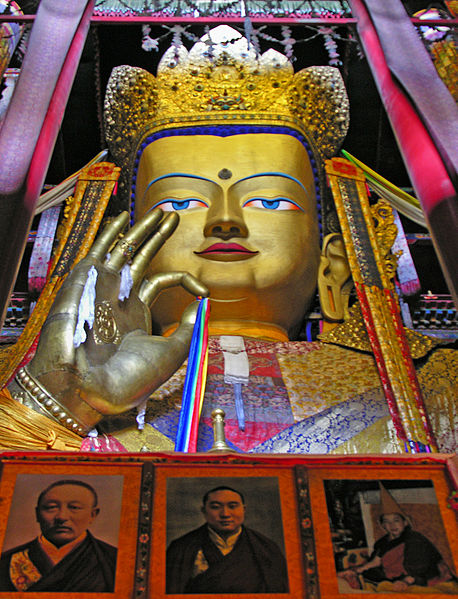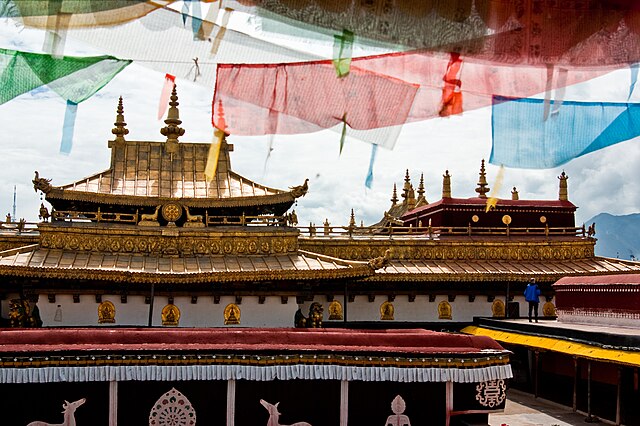Bon or Bön, also known as Yungdrung Bon, is the indigenous Tibetan religion which shares many similarities and influences with Tibetan Buddhism. It initially developed in the tenth and eleventh centuries but retains elements from earlier Tibetan religious traditions. Bon is a significant minority religion in Tibet, especially in the east, as well as in the surrounding Himalayan regions.
A statue of Tonpa Shenrab, the central Buddha in Yungdrung Bon
Yungdrung is a left-facing swastika, a sacred symbol of Bon.
Tonpa Shenrab life story, 19th-century painting, Rubin Museum of Art
Tapihritsa, a Bon siddha from Zhangzhung
The main religion in Tibet has been Buddhism since its outspread in the 8th century AD. As of 2022 the historical region of Tibet is mostly comprised in the Tibet Autonomous Region (TAR) of China and partly in the Chinese provinces of Qinghai and Sichuan. Before the arrival of Buddhism, the main religion among Tibetans was an indigenous shamanic
and animistic
religion, Bon, which would later influence the formation of Tibetan Buddhism and still attracts the allegiance of a sizeable minority of Tibetans.
Maitreya Buddha statue of Tashilhunpo Monastery in Shigatse
Khyungpori Tsedruk Bon Monastery in the Tibet Autonomous Region.
View of Jokhang, one of the most important monasteries of Tibet.
Interior of Ganden Monastery.








